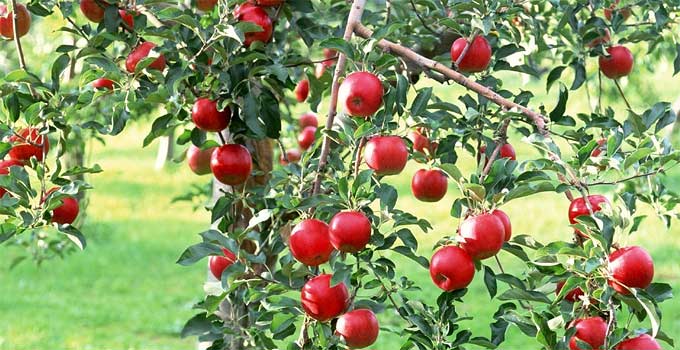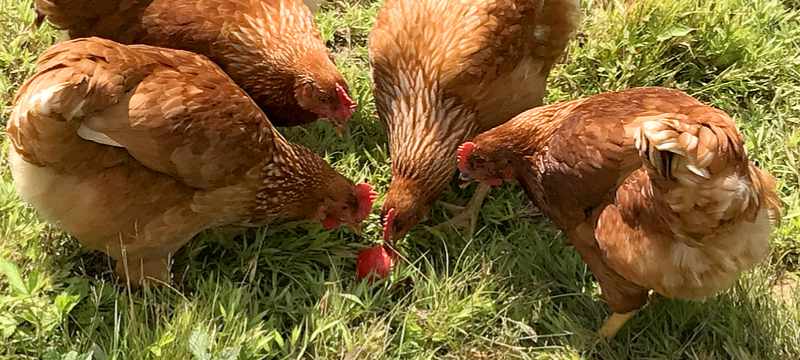Food Producing Trees – The Most Popular That People Grow

Do you have any food producing trees on your property?
Scroll down for the list of most popular food producing trees.
“The best time to plant a tree was ’10 years ago’, and/or ‘today’.”
If you’re even a little bit into the concept of self sufficiency, I highly recommend planting a food producing tree (or several) on your property.
Why? Because it’s free food! How about that for a bit of self sufficiency?!
Are you a procrastinator? Have you put off the idea because it might take many years before a new tree bears fruit?
It’s Never Too Late To Plant A Food Producing Tree
Well, don’t procrastinate. Like I said a moment ago, the best time to plant a tree was 10 years ago, and today!
Years ago we lived in a climate where just about any fruit tree would grow (Zone 10). We planted more in the yard during that time and eventually enjoyed the fruits of our labor. It was well worth the effort. We had apple, fig, and pomegranate already in the yard. Then we added grapefruit (by accident – see below…), orange, and I grew a mini (grape) vineyard (made my own wine).
Funny story: One tree that we wanted to plant was an Orange tree. So we went to Home Depot and picked one from their garden section, brought it home and planted it. It thrived. However when it finally produced some fruit, guess what? They were grapefruits! That was the last time I trusted the labels on fruit trees in that particular store! Went to nurseries after that…
Having since moved away from that region and now residing in a northern colder climate (Zone 3b), my choices are limited.
However I haven’t let that stop me… Can you say, Apple trees? There are lots of ‘wild’ apple trees around here – but they don’t taste so good (our chickens will peck them and eat them!). Some years ago we did plant Honeycrisp and McIntosh. Yum!

Fruit Tree Climates
Tree Climate Zones
Hardiness zones are used as a guide in selecting appropriate trees for particular areas. The climate zones are determined by average minimum yearly low temperatures.
That said, one ‘trick’ is to look around your neighborhood. See what others are growing. Then you’ll know what works in your zone.
GROWING ZONE
average minimum low temperatures
(1) Below –50° F
(2) -50° to -40° F
(3) -40° to -30° F
(4) -30° to –20° F
(5) -20° to -10° F
(6) -10° to 0° F
(7) 0° to 10° F
(8) 10° to 20° F
(9) 20° to 30° F
(10) 30° to 40° F
(11) 40° to 50° F
(12) 50° to 60° F
(13) 60° to 70° F
[ Read: Hardiness Zone Map & Frost Dates ]
Most Popular Food Producing Trees
Based on a poll conducted on this site back during 2018, we had a total of 163 votes for food trees.
Here are the results for the most popular food producing trees:
Top 5 Food Trees
(based on your previous comments)
1. Apple
2. Plum
3. Cherry
4. Peach
5. Pear
With that said, if I lived in a perfect climate where any of the trees listed below would grow… My top five might be apple, avocado, pecan, banana, and peach! The only place I’ve ever seen banana trees was in south Florida. So that’s not happening up here in northern New Hampshire ;-) The food producing trees thriving here are apples! And of course top-quality syrup from our Maple trees (but that’s not a fruit tree – so kinda cheating…)
| apple | 19 |
| plum | 17 |
| cherry | 15 |
| peach | 12 |
| pear | 12 |
| pecan | 10 |
| mulberry | 9 |
| apricot | 8 |
| avocado | 5 |
| banana | 5 |
| fig | 5 |
| lemon | 5 |
| orange | 5 |
| walnut | 5 |
| almond | 4 |
| nectarine | 4 |
| paw paw | 4 |
| persimmon | 3 |
| chestnut | 2 |
| guava | 2 |
| olive | 2 |
| papaya | 2 |
| tangerine | 2 |
| coconut palm | 1 |
| filbert | 1 |
| key lime | 1 |
| lime | 1 |
| mayhaw | 1 |
| pomegranate | 1 |
[ Read: Frost Damage on Fruit Trees – Critical Temperatures Chart ]
[ Read: How to Keep Deer Away From Eating Your Young Apple Trees ]
